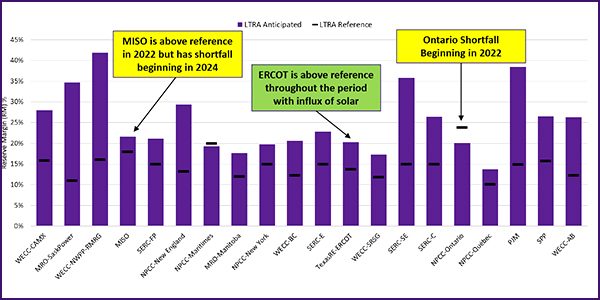
NERC Board Chair Roy Thilly | © ERO Insider
NERC’s Board of Trustees and Member Representatives Committee (MRC) will hold their first meetings of 2021 remotely because of the COVID-19 pandemic, board Chair Roy Thilly told the groups at their quarterly conference calls Thursday. The meetings had been planned for Feb. 3-4 in Manhattan Beach, Calif.
“We hope that [the pandemic] will be dying down, but of course we don’t know. And there are so many travel restrictions in place on employees of various stakeholders — [at the] Canadian border and other things — that it is prudent for us to do the meetings virtually,” Thilly said.
The pre-meeting and informational session will be held via conference call Jan. 6 as scheduled. A decision has not yet been made on the next board and MRC meetings, planned for May 12-13 in D.C.
Choudhury Elevated to MRC Chair
Paul Choudhury of BC Hydro, who is currently serving as vice chair of the MRC, was unanimously elected to take over from Exelon’s Jennifer Sterling as chair for 2021. ElectriCities CEO Roy Jones will serve as vice chair.
Elections for sector representatives will be held Dec. 7 to 17 to replace members whose terms expire in February 2021. The MRC is accepting nominations through Friday.
The MRC also approved revisions to its NERC MRC Briefs: Nov. 5, 2019.) This year’s changes are intended to give the committee more flexibility by removing unnecessary requirements from the MRC’s procedures for conducting conference calls.
Standards Actions
Howard Gugel, vice president and director of engineering and standards at NERC, presented three standards for approval by the board: CIP-005-7 (Cybersecurity — Electronic security perimeter(s)), CIP-010-4 (Cybersecurity — Configuration change management and vulnerability assessments) and CIP-013-2 (Cybersecurity — Supply chain risk management).

Howard Gugel, NERC | © ERO Insider
The standards were developed under Project 2019-03 in response to FERC Order 850, which directed NERC to submit modifications to address electronic access control or monitoring systems (EACMS) for high- and medium-impact bulk electric cyber systems. (See FERC Finalizes Supply Chain Standards.) A final ballot concluded on Sept. 10 with 80.78% of industry stakeholders in approval.
The board voted unanimously to approve the standards along with NERC’s 2021-2023 Reliability Standards Development Plan (RSDP), which provides schedules and anticipated resource needs for each project under development or expected to begin. NERC posted the draft RSDP for an informal comment period in August prior to its approval by the Standards Committee in October. After approval, the document will be filed with FERC and Canadian and Mexican government authorities. (See NERC Opens Comments on Standards Plan.)
“[This] is not a static document; it’s … a snapshot as far as things stand today,” Gugel said. “Certainly as new [standard authorization requests] are accepted by the Standards Committee, or new directives [are] issued by FERC, it would augment this plan going forward.”
Winter, Long-term Assessments Previewed
Board members also received an update on NERC’s 2020-2021 Winter Reliability Assessment, set to be released next week, and the 2020 Long-Term Reliability Assessment, which will be released in December.
NERC engineer Stephen Coterillo told the board that all regions are expected to have sufficient resources “under normal winter weather conditions,” echoing FERC’s 2020/2021 Winter Energy Market and Reliability Assessment released last month. (See COVID-19, Weather Drive FERC Winter Outlook.) Fuel and energy assurance pose significant risks in some areas — notably ISO-NE and NYISO — and extreme weather conditions could “result in the use of operating mitigations or energy emergency alerts to meet extreme peak demands.”

Anticipated reserve margins and reference margin levels for 2022 peak season | NERC
Although no specific threats were noted from the COVID-19 pandemic, Coterillo acknowledged that the coronavirus continues to cause “uncertainty in electrical demand projections and … heightened cybersecurity risk.” Damage to electricity infrastructure in Louisiana from this year’s hurricanes could also impact the local grid’s resilience, though the affected systems are expected to be restored by early winter.
On the longer scale, NERC expects sufficient on-peak capacity in most areas for the next five years, with the exception of Ontario and MISO, where planned reserves have the potential to fall below their reference margin levels. NERC Senior Engineer Mark Olson said the team identified several trends that bear watching over the long term, including the rapid projected growth of wind and solar generation resources — expected to comprise 57% of added on-peak capacity over the next five years — and the addition of distributed energy resources, particularly rooftop solar panels, across the North American grid.



